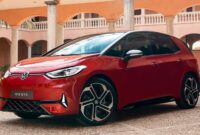There have been very positive sales results for electric cars in the United States and Europe. Interestingly, the latest data released by JATO Dynamics shows that demand for electric vehicles is growing beyond that of China, the world’s largest market for this type of vehicle.
The market share of Battery Electric Vehicles (BEVs) in the US was 5.1 percent between January and October 2022. While still small compared to the presence of powerful combustion engine vehicles, it is remarkable to see growth compared to previous years. For example, in the first ten months of 2021, BEVs accounted for 2.9 percent of the total market.
Two years earlier, from January-October 2020, EVs were only 1.7 percent of all new vehicle sales. In 2019, BEVs accounted for 1.3 percent of the total market. The popularity of the Tesla Model Y and the strong start of electric trucks, such as the GMC Hummer EV and Ford F-150 Lightning, explain part of the rapid growth.
This trend is expected to continue in 2023 with more affordable electric SUVs and trucks. Importantly, US consumers mostly buy these vehicles.
More than 1 in 10 cars in Europe are electric
Despite progress, the US electric car market is lagging behind Europe. JATO data covering 23 European markets shows that these vehicles account for 12 percent of new car registrations through October 2022. That equates to 1.09 million units out of 9.09 million for the entire market. The total increased to 1.86 million when plug-in hybrids (PHEVs) were added.
So, Europe’s total is 1.9 times higher than America’s. That gap has narrowed significantly since 2020. In that year, there were 2.5 EVs registered in Europe for every EV sold in the US. The ratio fell to 2.4 between January and October 2021.

The European boom can be explained by better infrastructure, more choices for consumers and good deals. Granted, it’s sometimes easier to buy a new electric car than a petrol one. This is due to the shift in priority that OEMs place on their products.
Since semiconductor issues will likely remain a supply issue, the few that are available are used in the most popular models (especially SUVs) or those that are easier to sell, such as EVs thanks to public incentives.

What will happen in the future?
Both of these markets are expected to see higher numbers for electric vehicles next year. Rapid adoption in some markets driven by more competitive offerings. More accessible and attractive products will arrive next year.
These vehicle introductions include large trucks and SUVs in the US and small and compact SUVs in Europe. As consumer awareness increases and their desire to drive electric is supported by better cars, it is not uncommon to see double-digit market shares for BEVs in the US and over 20 percent in Europe by 2023.
The author of the article, Felipe Munoz, is an Automotive Industry Specialist at JATO dynamics.



